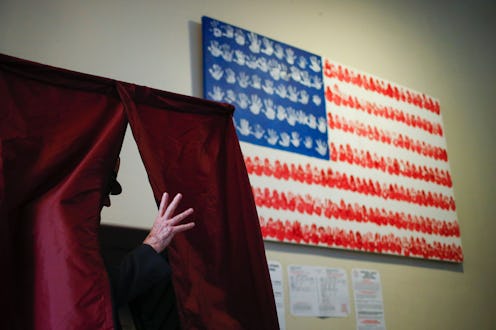News
This Proposal Could Reform The Electoral College
Ah, the Electoral College. This institution was invented by the founding fathers as a way for politicians to override the popular vote in case that vote yielded a victory for a candidate “who is not in an eminent degree endowed with the requisite qualifications,” in the words of Alexander Hamilton. Today, many electors are bound to vote according to their states’ popular vote results, and those who aren’t almost always do. Though the original, some would say highly undemocratic, purpose of the Electoral College has been abandoned, problems remain. One reform proposal is the district plan. But would it really reform the Electoral College for the better?
One of the main critiques of the Electoral College is that because 48 states choose to allocate electoral votes on a winner-take-all basis (the College is established by the Constitution, but the allocation of votes is left up to states), it's possible for a candidate to win the electoral vote while losing the popular vote.
Based on the district plan, according to the Congressional Research Service, electoral votes would be distributed by congressional district -- you win a district, you get that district's vote. But states also have extra electors, one for each senator. Those two would be allotted to the statewide winner. If the electoral vote results in a tie, then most proposals say whichever candidate won a plurality of the district votes (not the additional senator-elector votes) would win the race. Nebraska and Maine currently implement the district method of allocating electoral votes; Maine has never used it, though, since all candidates who have won the state swept its two districts, while Nebraska split its electoral votes once, in 2008, when Obama won one district.
On the surface, the district method sounds like it would align more closely with the popular vote by breaking down the distribution of electoral votes. The thing is, it might not at all. The Congressional Research Service noted what the results of the 2000 presidential election between George W. Bush and Al Gore would have been under the district plan. That election is commonly referred to in critiques of the current Electoral College system, since it allowed Bush to win even though he didn't win the popular vote. But the data show that Bush would have won by a much greater margin under the district plan, with 288 electoral votes as opposed to the 271 he actually got. Any time you have a system wherein a big chunk of voters are represented by a single electoral vote, a discrepancy between the popular vote and the electoral vote will exist.
That's not to say the district plan doesn't have anything going for it. If you live in a "safe" red or blue state and are part of that state's political minority, you might not feel very incentivized to vote, since you know where all your state's electoral votes are going to go anyway. But the district plan makes it possible for the underdog candidate to get at least something on the district level from such states, which could mobilize political minorities within them.
But the problems outweigh the benefits. Fair Vote points out that the problem of gerrymandering could be expected to grow much worse under the district plan. In 42 states, the state legislature draws congressional district lines. The party in control has a stake in drawing those lines in ways that serve its political interests. If the distribution of electoral votes is based on congressional districts, the political incentive to manipulate district lines grows tremendously.
The Electoral College system as currently implemented has its problems, but so does the district plan that would reform it. Unless we have a "one person, one vote" method, there is the risk of winning elections without winning the popular vote.
